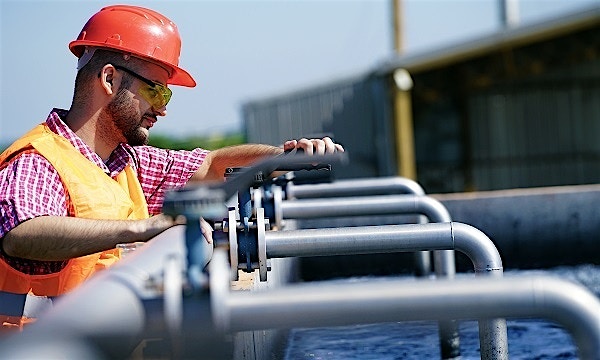The utility industry is under tremendous pressure to adopt innovations including technological advancements. The growing demand for a reduction in carbon footprints, slow load growth, soaring energy prices, concern around grid reliability and clean and green energy initiatives, alongside personalized digital offerings, are becoming an ever-present concern for the energy and utilities industry. Looking to address these issues, organizations are turning to digital solutions. According to a survey, the digital utility market is expected to reach $374.91 billion in 2027.
To navigate these changes and prepare organizations for better customer care, the energy and utility industries must rethink and invest in upgrading infrastructure, securing grids against cyberattacks and enhancing customer experience through digital technologies.
“The distant future is bright only if the utility industry can address these market shifts sustainably and speedily,” said Vijay Kalyanakrishnan, Global Director, MegaLT, HCLTech. Describing the forces driving the change in the utility network in a blog, he elaborated that “the utility industry is surrounded by novel digital technologies, accelerating the advancement toward innovation”.
Digital technologies transitioning active utilities
The utility industry is aiming to reduce its carbon footprint to net-zero and build a diversified clean energy portfolio over the next few decades. This is leading to industry-wide transformation, with enterprises making strategic investments in the utility grid, transforming grid operations, expanding renewable energy resources and empowering customers to meet various business objectives.
Technology-led transformation and regulatory compliance that governs such transformation can address the multiple challenges faced by the electric power business. Recently, the transition from the Distribution Network Operator (DNO) to the Distribution System Operator (DSO) model has been widely adopted to address the emerging needs of a net-zero energy sector. This has led to the emergence of a digitized approach that better meets the needs of stakeholders.
“Faster, cheaper, scalable and flexible computing and connectivity solutions fuel the rapid deployment of viable technologies, such as IoT, artificial intelligence (AI), robotics, advanced analytics, automation, cloud computing, virtual and augmented reality and robotics to digitize outdated business models and create new value-added solutions,” added Kalyanakrishnan.
Technology trend – the future of hydrogen
By 2025, 40% of energy and utility companies will face a 50% increase in capital demands triggered by resource scarcity and soaring demands. The future of utility and energy organizations requires taking bold steps with both agility and resilience, while exploring newer technology investments.
Diversifying the energy sector is fundamental when creating a low-impact-power grid. Enterprises are exploring hydrogen’s potential in the utility sector. “Hydrogen is now enjoying unprecedented momentum. The world should not miss this unique chance to make hydrogen an important part of our clean and secure energy future,” said Dr. Fatih Birol in a report prepared by the IEA for the G20, Japan.
The utility industry is responsible for about 1.55 billion tons of emissions annually in America. Replacing fossil fuel energy with hydrogen can significantly shrink the sector’s footprint. The US is electrifying its utility sector to increase sustainability. Producing electricity from low-emission sources can reduce pollution. Utilizing hydrogen for electricity also improves utility costs.
Technology trends such as hydrogen on the provider side and electric mobility on the consumer side are impacting the existing delivery infrastructure by reducing controllability and impacting reliability, subsequently increasing overall business volatility. They also leads to the development of new business and operating models and constant and dynamic adoption for growing business patterns.
This means utility organizations must be composable with modular, adaptable and autonomous components, while consequently utilizing technologies to achieve sustained resilience.
Utility of the future – the HCLTech Framework
Digital technologies could open a new horizon for fast-moving companies that create digital platforms to meet their customers’ needs. Decreasing cost of cloud computing, data analytics and the increased intelligence in smartphones could enable positive outcomes across reliability, safety, resiliency and affordability.
HCLTech’s ‘Utility Of the Future’ framework focuses on building a secure, scalable and sustainable technical foundation that transforms grid operations, digitally enables the workforce and improves customer experience.
A digital enterprise requires going beyond incremental digital projects to reinvent the business model and capabilities. It requires innovation and digital execution at scale to deliver clear outcomes by setting measurable KPIs.
The HCLTech solution offerings align with the future needs of the utility industry in assisting and improving the viability of digital utility services, ensuring the health and safety of both enterprise and operational technology assets.




